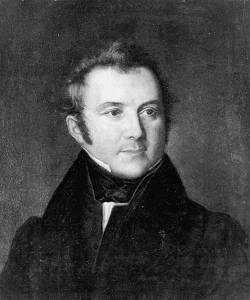If the amount of studies concerning every detail of the work of the two architects mentioned is practically immense, on the other hand we know very little about Pietro Nobile, a Swiss from the Canton Ticino, "pertinent" to Trieste, and inhabitant in Vienna, of Roman schooling, friend or acquaintance of most of the great European artists of his time from Antonio Canova to Bertel Thorwaldsen, from Schinkel himself to Leo von Klenze, from Francesco Hayez to the Gorizia Franz Caucig, director of the Special School of Painting and Sculpture at the Viennese Academy. He was also a friend and privileged correspondent of the Trieste from Domenico Rossetti, of the count Leopoldo Cicognara and grand commis of the Habsburg state, in which he practiced all his activity as an architect, archaeologist, teacher, programmer, programmer, councilor courtly of the state. Protected at first, he later became a friend of Lothar Wenzel prince of Metternich who put him in charge of the School of Architecture (yes, him, the black beast of all the European Sturm und Drang and standard bearer of the reaction). It was Metternich who lent him the halls of his Viennese palace for the exhibition of the works of the students of the Academy architects who had to persuade the Emperor on the correctness of the setting of the study programs that Nobile attempted to modify in a completely revolutionary way. In the state that became Kakania, of Muslim memory, higher education belonged to the Emperor: Metternich himself was only "Protector of higher studies", therefore without the power of the last decisions.
Due to the problems inherent in his positions, Nobile traveled tirelessly, throughout Europe and also to the most distant districts of the great Empire. The multiplicity of languages, cultures, social and economic development of the individual regions seemed to enhance his desire for cultural exchanges in the period of dangerous growth of nationalisms which, from Ticino - therefore of Swiss mentality, of mixed basic Italian and Austrian culture with the grafts of other cultures, however European - he could not take too seriously.
He was "pertinent" in Trieste, remained dear to him not only for having spent his childhood and the early years of his career, but also for having built some significant buildings and because his brother Antonio resided there, recipient of about 1060 letters with meticulous testimonies of life private and public spaces of the architect. Pietro Nobile left his spiritual legacy to him, consisting of seventy volumes with one hundred drawings each. These are materials that are in part the testimony of his architecture and, in part, were to become a treatise on architecture of his time, to be used as a school book, which did not happen. However, this legacy has come down to us.
Trieste is not a city conducive to architecture or even to studies on it. As is known, this applies both to local architects and to those who, like Nobile, abandoned it for reasons of service. The fact that he has reached the excellence and the top of his professional career "outside Trieste" has probably been considered as a "sin". As far as I know, there is still no monograph on Peter or - in Vienna - on Peter von Nobile, due to the lack of knowledge of documents, kept in the public and private archives of Trieste until not long ago. Of course, the importance of his work cannot be completely ignored: with the flourishing of the studies from Trieste on the events of the Church of Sant'Antonio Nuovo or Palazzo Costanzi, the even more copious Viennese studies on the Burgtor, on the Temple can be approached of Theseus or those of Salzburg on the events of the reconstruction of the Mirabell Castle and park, to mention only universally known buildings. We can add to these the knowledge of his official work at the Academy of Fine Arts in Vienna, rebuilt in 1967 by the Chief Archivist of the prestigious Institution, Walter Wagner, on the basis of official documents, elaborated and published in the Die Geschichte der Akademie der Bildenden Kuenste in Wien (History of the Academy of Fine Arts in Vienna). This splendid book has served all those who, like me, have attempted to clarify certain aspects of the training of engineers and architects from Central and Central and Eastern Europe. But we all had the only official, courtly, predigested truth, however prestigious it might be.
PIETRO NOBILE
Son of Stefano, master builder, originally from Campestro and Marianna Nobile, in his father's footsteps he completed his apprenticeship in construction art in Trieste, Rome and Vienna until 1801. He specialized in civil engineering in 1807 until he was appointed chief engineer of the public buildings in Trieste in the period 1810-1817. A prominent exponent of the neoclassical movement, he was active above all in Vienna and Trieste.
Few European architects, active in the first half of the nineteenth century, can be considered as important for the subsequent events of architecture as was the Ticino-Trieste-born Pietro Nobile, for thirty years Director of the School of Architecture of the Academy of Fine Arts in Vienna , called Die erste Schule des Reichs - that is, the First School of the Empire, Habsburg not yet Austro-Hungarian. Of course, we historians are used to evaluating an architect almost only from the works built and, in most cases, this seems sufficient; however, there are characters whose function, importance and value would seem to transcend the vast boundaries of the building for different reasons from one to the other. I could mention the studies of Emil Kaufmann, whose degree thesis entitled The architect Ledoux's projects and the aesthetics of Classicism, published in 1924, provoked that flood of interests and studies that profoundly re-evaluated the neoclassical period as a whole. On the other hand, the function of Karl Friedrich Schinkel's work was absolutely fundamental for the architectural events of middle Europe, attracted by Germanic culture. But if Ledoux (and followers) managed to form a style, Schinkel constituted a way of thinking that characterized for almost a century a good part of the German architectural culture and of the neighboring ones.








